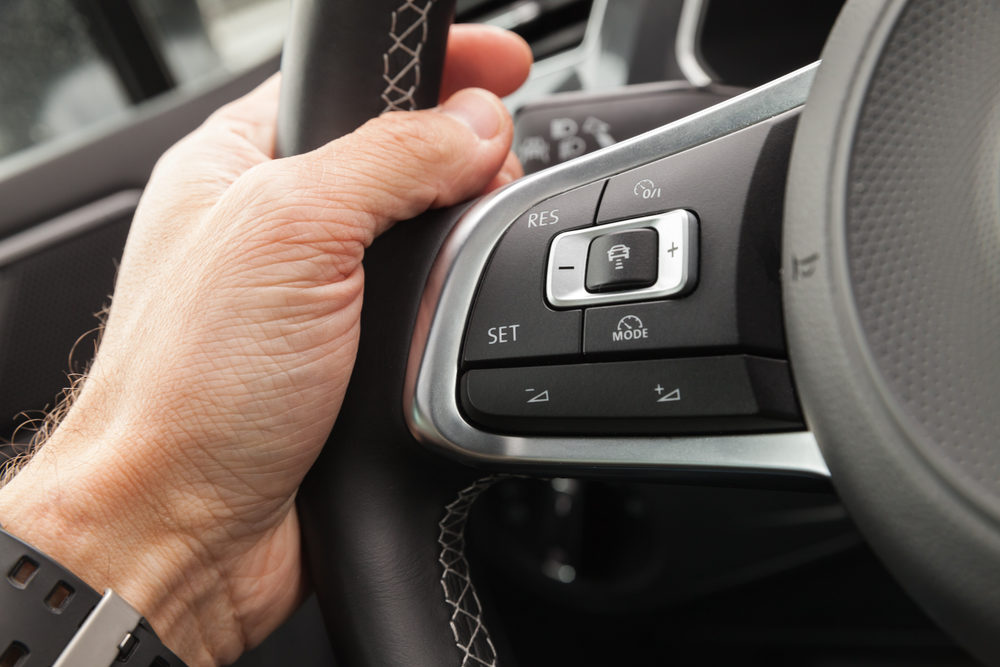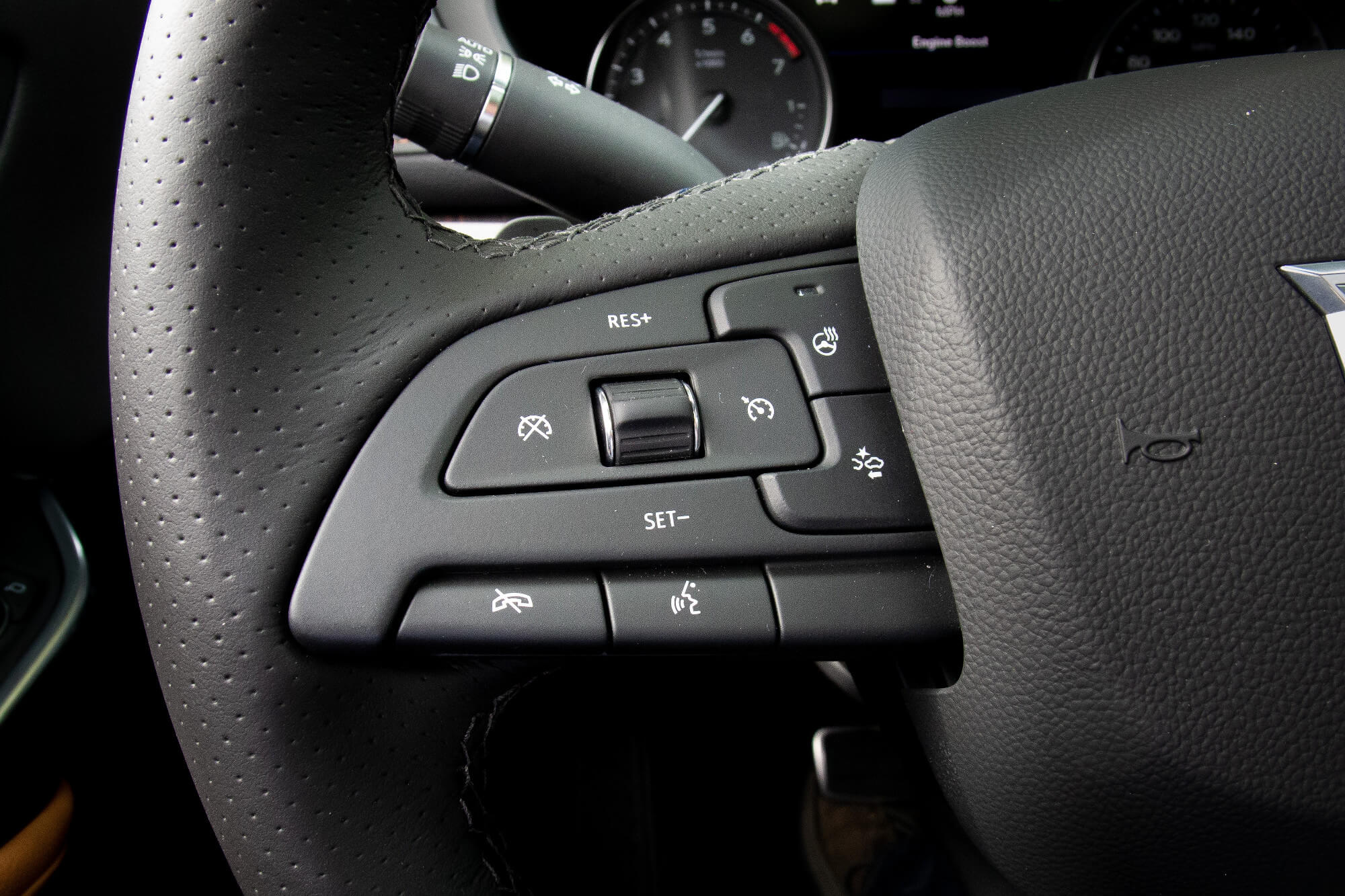Table Of Content

Cruise control is far more common on American cars than European cars, because the roads in America are generally bigger and straighter, and destinations are farther apart. This is because the cruise control system is not continuously running when engaged, but rather it only activates when the car is traveling at a consistent speed. When activated, the cruise control system will automatically adjust the throttle and brakes to maintain a set speed, which takes very little power from the battery. Therefore, engaging the cruise control feature will not cause your car’s battery to drain any faster than if you were driving without it. There continues to be plenty of confusion about self-driving or autonomous systems, what they are, and how they operate.
Adaptive Cruise Control: How Does It Work?
A car with ACC will commonly boast small wheel-mounted units that measure its speed, along with a front-mounted one that can determine how far away other vehicles are. The former can adjust how fast your vehicle is moving relative to any motorists ahead, thereby ensuring that you always maintain your selected distance from them. Braking capacity while the system is active differs, but typically, the driver will be alerted to brake heavily if necessary (if a driver ahead does the same for instance).
Cruise Control Acceleration and Deceleration
If your vehicle experiences erratic speed changes with cruise control engaged, this could indicate a problem with the throttle control system or the vehicle’s computer system. These complex issues generally require professional diagnostics and repair. This is only the case when driving for longer stretches on wide, clear roads, however. The reason is that there are certain things human drivers are better at than their machine counterparts, and adjusting speed subtly in response to changes in elevation is one of them. After turning on cruise control, you’ll need to set your desired speed.
Is Adaptive Cruise Control Worth It?
While driving through the city, you’ll face a number of stop lights and stop signs that will require manual braking. In the past 25 years, huge leaps in sophistication propelled cruise control to a point where some drivers may be confused by exactly what it is and how it works. Here, we will clear up any confusion about its functions, benefits, and limitations to help you on your car buying journey. Cruise control makes driving easy and convenient, and at the same time, it also takes care of safety. But like every other feature, it has its own set of advantages and disadvantages, which are elaborated in the following section.
Why Are My Brakes Making Noise?
Many systems set the cruise control at the current speed, while others require you to manually set one. You can increase and decrease this speed as needed without interrupting the mechanism. As mentioned, cruise control may become inconsistent in rainy, snowy, or otherwise hazardous conditions. If you must drive in this situation, it may be a better idea to do so manually. Cruise control works best on a clear day with constant traffic flow. Cruise control has come a long way since first invented and patented by Ralph Teetor in 1950, who originally named it the “Speedostat”.
Although the fuel savings were minimal, both claims were accurate. For example, some cars have a combined button to set the initial speed and accelerate. Others have fine-tuning buttons that you can click to increase or decrease your speed by a set amount, often one mph.
A governor was used by James Watt and Matthew Boulton in 1788 to control steam engines, but the use of governors dates at least back to the 17th century. On an engine, the governor uses centrifugal force to adjust the throttle position to adapt the engine's speed to different loads (e.g., when going up a hill). Have you ever been confused as to the sounds coming from your vehicle when you brake? From grinding and rattling to thumping and squealing, you can learn how to decode...
What is adaptive cruise control?
Do Car Safety Features Reduce Car Accidents? – Forbes Advisor - Forbes
Do Car Safety Features Reduce Car Accidents? – Forbes Advisor.
Posted: Tue, 02 Apr 2024 07:00:00 GMT [source]
Just as conventional cruise control, adaptive cruise control allows you to set a desired travel speed. But the difference is that the adaptive cruise control maintains a safe distance between the car in front of you and your car at a consistent pace by using the forward-mounted sensors. For instance, if the car ahead of your vehicle begins to slow, adaptive cruise control will use the engine brake to automatically slow the pace of your vehicle and maintain the selected distance. Many say adaptive cruise control is a step to autonomous cars in the future.
AI-Powered Cruise Control to Thwart Traffic - Tech Briefs
AI-Powered Cruise Control to Thwart Traffic.
Posted: Tue, 12 Dec 2023 11:02:52 GMT [source]
Cruise control is a valuable feature in many modern vehicles, enhancing convenience and efficiency, especially during long drives. This guide delves into the intricacies of using cruise control, offering expert insights, technical details, safety tips, and more. Some drivers often have the luxury of wide, peaceful, near-empty roads. For others, driving tends to be a commuter's cacophony of traffic jams, honking horns, and slow stop-start-stop-start progress. The experience can differ greatly depending on the time of day and whether it's a weekday or the weekend. The bottom line, though, is that one of these scenarios is a far better fit for cruise control than the other.
So, do check the owner’s manual before fiddling around with the system. It’s better if you are familiar with the controls before driving the vehicle, as it will avoid unnecessary distractions. Cruise control in a car replicates the inputs of a driver to control the vehicle’s speed. But instead of pressing the accelerator pedal, it uses a different mechanism to maintain a constant cruising speed. Early systems didn’t allow for presetting the maintained following distance. Consequently, a vehicle six or seven car lengths ahead of you moving into your lane became almost an airbag-deploying event.
It’s inappropriate in stop-and-go traffic; when weather conditions are snowy, icy, or even heavy rain; on narrow, curvy roads; or with frequent speed limit variations. The time and attention it takes to disengage the cruise control in these situations could lead to a crash. As autonomous vehicles become more sophisticated, cruise control technology is evolving to support higher levels of automation. For example, some autonomous vehicles are equipped with advanced cruise control systems that can navigate complex traffic scenarios, merge onto highways, and even change lanes autonomously. It allows cars to talk to each other, coordinating their speeds to maintain a safe distance. It's like having a well-coordinated team of cars all working together to make the traffic flow smoother and reduce congestion.

Although individual carmakers may provide differing controls, the fundamentals of a basic cruise control system remain the same. That is, the driver manually sets and then can adjust the desired speed, while the cruise control system automatically responds to the driver’s input via steering-wheel-mounted controls. Moreover, the more sophisticated systems with full stop and start or a low-speed traffic-jam feature work great for city driving.
In a Level 3 vehicle, the driver can completely surrender control of the vehicle’s operation on specific roads. The driver must be prepared to resume control in case of an emergency but otherwise doesn’t have command of the car. That is, the driver’s hands can be off the steering wheel and their attention elsewhere. If you want to speed up or slow down, use the appropriate control.
Depending on the car, the location of the controls can vary, but the functionality of the cruise control will usually be similar across the board. Yes, you will find aftermarket adaptive cruise control kits available. Depending on the features, they range in cost from $250 to nearly $4,000. For most involved electric-system installations, it’s best to get them done by a dealership or certified mechanic. Installation cost depends on the sophistication of the system and the vehicle model. They begin with no automation and wrap up with full automation, including vehicles without pedals or steering wheels.
Is anyone surprised that carmakers can’t seem to agree on a single term for adaptive cruise control? ” We can sort of forgive Mercedes for its Distronic cruise control. Some call it adaptive cruise control as the root and then tack something onto it. For a deeper understanding of cruise control and its various aspects, it’s always beneficial to refer to your vehicle’s manual and seek guidance from automotive professionals. It’s not advisable to use cruise control in hazardous weather or heavy traffic. As you’re learning how to operate a vehicle, understanding cruise control will help increase your comfort behind the wheel and knowledge of driving.
It's like having an extra set of eyes on the road, making highway driving a breeze. Plus, some ACC systems can even handle stop-and-go traffic, bringing your car to a full stop and then picking up speed again when traffic gets moving. Ensure it’s turned on and you’re at the right speed (usually above mph). If these aren’t the issues, it might be a blown fuse, a faulty brake pedal switch, or a defective speed sensor.


